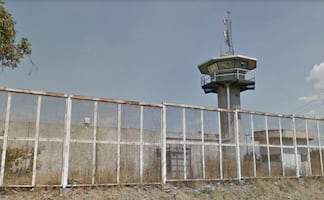Más Información

Niegan amparo a excolaboradora de Silvano Aureoles por caso de cuarteles en Michoacán; Villegas Pineda sigue presa

Acusan a Citlalli Hernández de llamar a boicotear Totalplay de Salinas Pliego; "hablé de activismo frente a injusticias", revira

"Queremos cerrar este capítulo", dice Salinas Pliego al SAT; esperarán a enero a conocer fundamentos legales de adeudo fiscal
The number of undocumented migrants apprehended on the US-Mexico border increased by 88% in Fiscal Year 2019 (from October 2018 to September 2019) over the same period the year before, as informed on Tuesday by the head of US Customs and Border Protection, Mark Morgan .
There were about one million detentions of migrants on the southern border in Fiscal 2019, said Morgan at a White House press conference, calling it an “ unprecedented achievement ” and noting that “These are numbers (that) no immigration system in the world is designed to handle.”
This is the highest annual total in the last 12 years and can be attributed, in part, to a spike in detentions of migrants from Central America who arrived on the southern border during the March-May 2019 period , according to CBP figures.
The CBP chief, who is serving in the post on an interim basis, said that about 150,000 people tried to cross the border without being intercepted by US authorities, and thus the true figure of migrants and refugees who arrived in the US may well be higher.
Despite the increase over the last fiscal year, Morgan said that over the past four months there has been an ongoing reduction in apprehensions , which he attributed in part to the agreement signed with Mexico to prevent asylum petitioners from arriving on US territory.
Morgan said that the cooperation between the US government and Mexican President Andrés Manuel López Obrador has been “incredible” and something “for the history books.”
In September alone, some 52,000 migrants were detained by US border agents trying to cross illegally into the US, a 65% decline from the peak point for border crossing attempts, which occurred in March when there were 144,000 detentions , the highest monthly figure for the year.
The year in which the most detentions of illegal migrants along the US-Mexico border were made was 2000, when 1.6 million migrants were detained.
However, immigration authorities say that the current migration phenomenon is completely different, noting that before the migrants were mostly adult Mexicans and now the flow consists largely of complete Central American families , including numerous children.
mp
Noticias según tus intereses
[Publicidad]
[Publicidad]
















